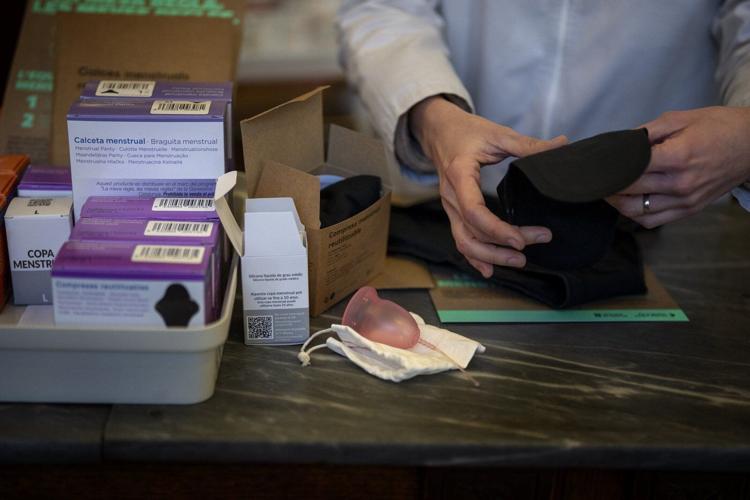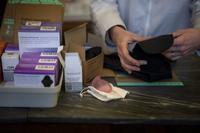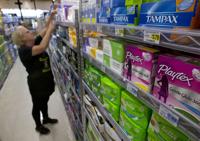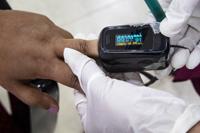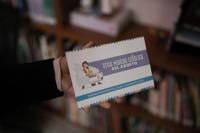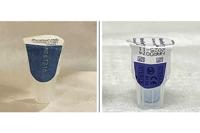It was six months ago that Selin Celikoyar bought her last tampon and switched to a reusable menstrual disc.
"I had already been wary of tampons from an and also from a biological perspective. I felt that they were very wasteful and expensive to consistently keep buying," she said.
The flexible discs and other reusable menstrual products are gaining traction as alternatives to the billions of single-use pads and tampons that get tossed into landfills every year. Products such as the discs, silicone cups and period underwear can be reused for years, so they’re cost-effective and long-lasting in addition to helping people reduce waste. The popularity of the reusable alternatives has grown since the pandemic, when it was easier to experiment with period products in the privacy of a home bathroom, according to experts.
Celikoyar said she used tampons and pads for years because those are the options she grew up knowing about. But when she saw her friend make the switch to a menstrual disc, she decided to try it too.
“The experience has been such a game changer,” she said.
Single-use products wind up in landfills
About 12 billion disposable pads and 7 billion tampons go into U.S. landfills every year, according to Dr. Luwam Semere, chief of obstetrics and gynecology at Kaiser Permanente Santa Clara. Pads are mostly plastic. Once they're in the landfill, they take up to 800 years to degrade, according to the ��ɫֱ�� Institutes of Health.
Single-use pads and tampons are by far the most popular period products. Women's health expert Dr. Navya Mysore said that's not because they're better, they're just usually the first options kids are shown.
“It was often like, ‘What did your mom use? What did your grandma use?’ And that’s how you were introduced into period hygiene,” said Mysore, a primary care physician based in New York City.
Advantages and drawbacks to switching
The most popular is the menstrual cup, which gets inserted much like a tampon. The discs get inserted farther in, so they don't interrupt intercourse. Both can hold several times more than a tampon and can stay inserted for up to 12 hours, instead of the four to eight hours recommended for tampons. Semere also said the risk of Toxic Shock Syndrome commonly associated with tampons is much lower with menstrual cups and discs.
The cons? The products require some technique to put them in right, and doing it wrong can get messy. The cups and discs also have to be cleaned regularly with soap and water.
“It’s hard to do that if you’re at work and you’re in a shared, public restroom. It’s not the most convenient,” said Mysore.
Cups prevent leakage by creating a suction, so people who use intrauterine devices for contraception risk dislodging them if they pull out a menstrual cup without breaking the seal.
The placement of discs, which don’t use suction, can also take some getting used to.
“It’s high up there, you don’t feel it, but it can be sometimes harder for women to pull them out,” said Dr. Annemieke van Eijk, an epidemiologist with the Liverpool School of Tropical Medicine.
But for Celikoyar, the advantages of the discs outweighed the drawbacks. She said that longer changing window has gotten her through a back-to-back concert and red-eye flight without any concern.
“There’s an ease of use there for the modern woman that is significantly better than traditional methods,” she said.
Comparing costs
Menstrual cups and discs typically cost between $15 and $40 and come in different shapes and sizes. They're available online and at pharmacies and big box stores.
“Ideally, you would like to experiment a bit with what type of cup works best for you. And the cost can be kind of prohibitive to do that,” van Eijk said.
A reusable product can help save money over the long term. Celikoyar estimates that she was using three tampons every day for seven days, or about 20 per month. With tampons costing 20 to 25 cents each, someone who switched to a reusable product would likely break even after a few months.
For people who prefer pads, the most common reusable option is period underwear, which is comparable to regular-looking underwear with an extra absorbent lining.
“Those are nice because we do see people getting irritation from pad use," said Semere. "Because of the different materials that are in the disposable pads.”
The downside, just like with pads, is the inability to tell when it's absorbed all that it can.
Mysore said that's why some of her patients use the underwear as a backup, and pair them cups, discs or tampons.
“You can sort of mix and match different period products, depending on how heavy your flow is and what your period is like for you,” she said.
___
The Associated Press’ climate and environmental coverage receives financial support from multiple private foundations. AP is solely responsible for all content. Find AP’s for working with philanthropies, a list of supporters and funded coverage areas at .

